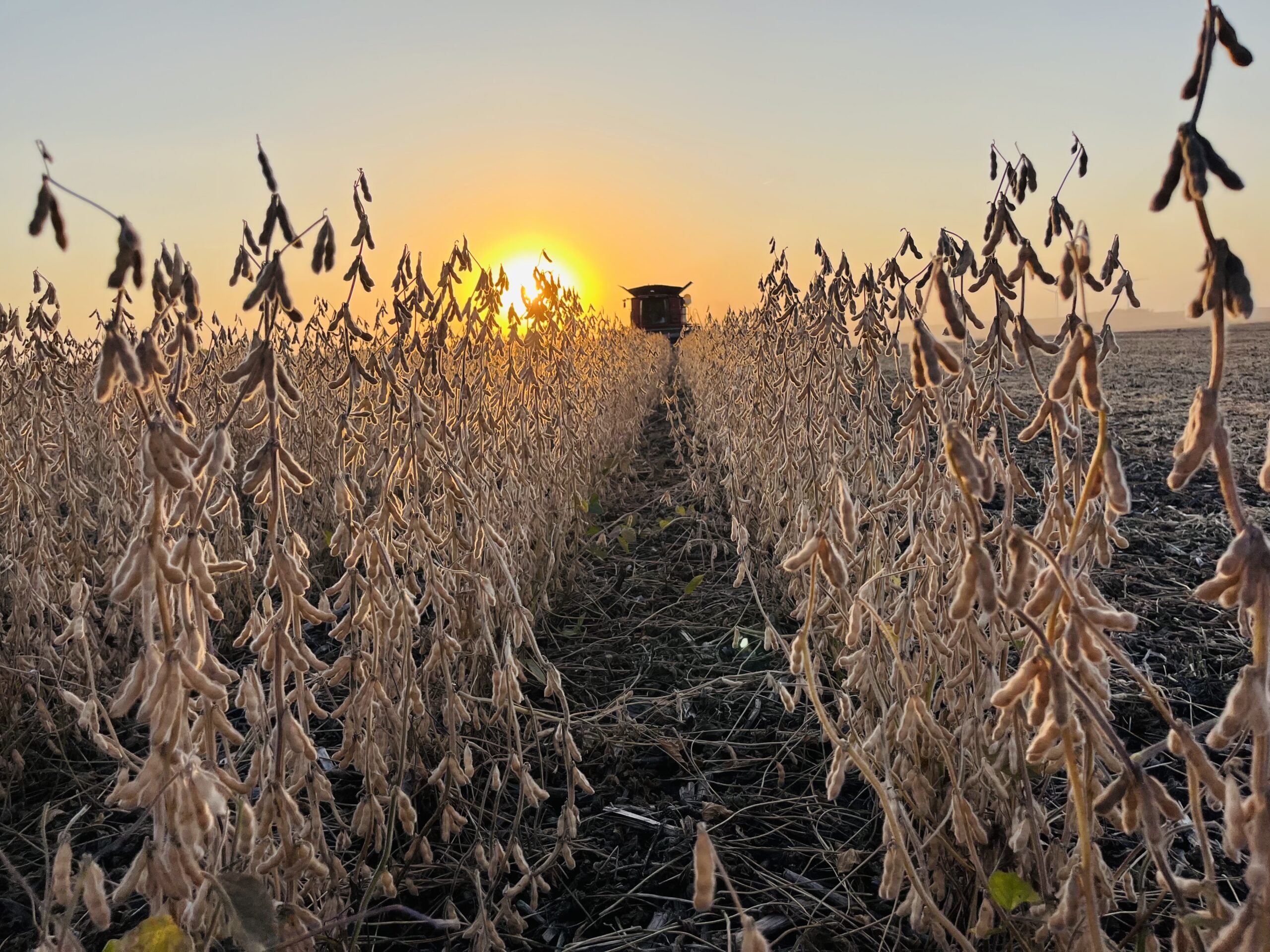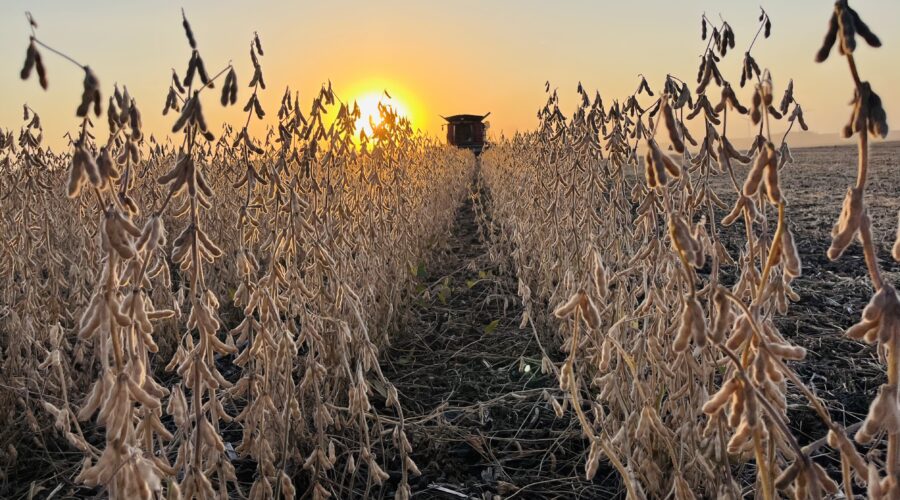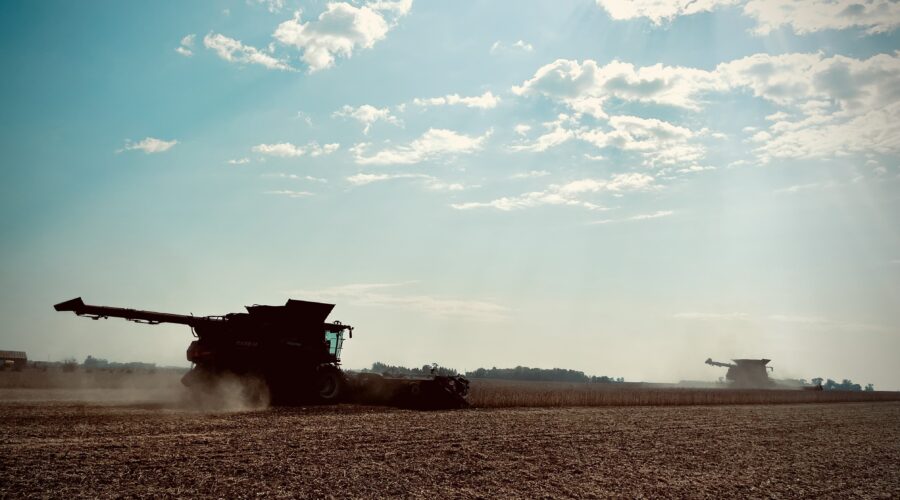
06 Oct Christy: Through the bean-vine

Worthington, Minnesota—Enough about the weather. What happens to these beans we work so hard to combine? Where do they go? Why do we work so hard to combine them at the right time? I’m going to explain as best I can. It’s important to know. And you’ll maybe have a better understanding for why we get so touchy about this weather.

Soybeans are a tricky commodity. They need to be harvested at the right moisture to ensure the highest protein level and prevent loss through shattering of the pods when combined. Usually, moisture between 13 and 15% yields the highest. Thirteen percent moisture is the standard for soybeans, so if beans are harvested at 10%, farmers lose 3.6% in weight. This is a loss equivalent to $27 per acre at today’s prices, which does not take into account additional harvest loss from additional shatter, or conditions. That’s money on the ground you can’t pick up.

These beans hold value because they are used in so many ways. Soybeans are used mostly as animal feed, used in biofuels, plastics, and the oil derived is also used as cooking oil, adhesives, sealants, and that Chapstick you use—it possibly holds soybean oil as well. Soybean oil is high in fatty acids, those that can reduce cholesterol and are heart healthy.
It’s a versatile commodity that only half of which stays in the United States. It surprised me, too, to learn that about 48% of the soybeans harvested in the United States last year stayed here. Most were shipped off to China to feed pigs; also, India, Japan, and as far as Turkey.
As it turns out, we really do feed the world.
As consumption continues to grow, so will the need for soybeans grow. They will continue to be a commodity we harvest and work hard to cultivate. Farmers will always be the basis for life because they afford us the opportunity to be fed.
I am, by far, not an expert in our field, but even I can see the precision needed to see our crops flourish. We need soybeans to contribute to our economy, and soybeans need us, too. They won’t grow without the farmers who plant them. They won’t get combined without the harvesters who cut them. It’s a revolving door of who feeds whom.

So, why do we do it? It’s what we know. And something that most of the world doesn’t. It’s what farmers have grown up doing their whole lives. There isn’t any alternative. It has to be done, so it gets done. Our world reaps the benefits of what farmers do. And it’s important to know, that’s why I want to share it with you.
Christy Paplow can be reached at christy@allaboardharvest.com.

Sorry, the comment form is closed at this time.